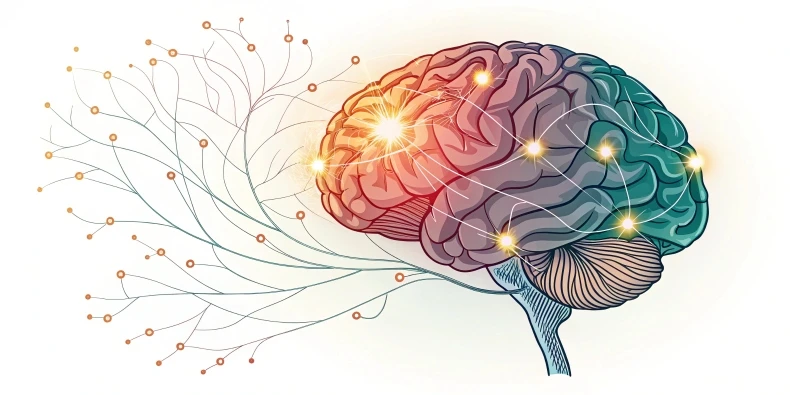In today’s fast-paced world, where stress and daily challenges constantly test our resilience, it is crucial to find ways to maintain psychological and emotional balance. One such tool is affirmations — short yet powerful statements that help reshape thinking patterns, reduce stress, and strengthen self-belief.
Affirmations have been used for centuries, with roots in ancient spiritual and philosophical traditions. Today, they have become an essential part of self-improvement and personal growth practices. In this article, we will explore what affirmations are, how they work, and why regular practice can profoundly transform your mindset and approach to life.
You’ll also learn how to formulate affirmations correctly to maximize their benefits and discover effective techniques for integrating them into your daily routine.
What are affirmations?
Affirmations are short, positive statements that, when repeated regularly, help reshape thinking patterns, boost self-confidence, reduce stress, and improve overall well-being. They serve as a self-help tool, allowing us to consciously cultivate a positive mindset and influence our internal beliefs.
Simply put, an affirmation is a way to direct your focus toward the positive aspects of your life and thoughts. By repeating empowering phrases, you can replace limiting beliefs with constructive and motivating ones.
Affirmations can be broadly categorized into positive and negative affirmations:
✅ Positive affirmations strengthen self-belief and encourage action. For example: “I am capable of achieving my goals”, “Every day, I am becoming a better version of myself”.
❌ Negative affirmations are self-limiting beliefs that undermine confidence. For example, the thought “I’m a failure” reinforces self-doubt and holds you back.
It’s important to recognize the impact of negative self-talk and consciously replace it with constructive affirmations. If you catch yourself engaging in self-criticism, try reframing the thought. Instead of saying, “I always mess things up”, say, “I learn from my mistakes and grow stronger”.
The history of affirmations

Affirmations trace their origins to ancient spiritual practices, where words and sounds were used for self-alignment, healing, and altering states of consciousness. In Buddhism and Hinduism, similar techniques existed in the form of mantra meditation, enabling individuals to focus, achieve inner harmony, and strengthen their connection with higher truths.
One of the most well-known and ancient mantras is “Aum” (or “Om”), which symbolizes the universal vibration of the cosmos. It is considered the primordial sound of creation and is used to attain spiritual balance.
In Hinduism, a popular affirmation is the “Hare Krishna” mantra, composed of repeated names of Krishna:
Hare Krishna, Hare Krishna,
Krishna Krishna, Hare Hare,
Hare Rama, Hare Rama,
Rama Rama, Hare Hare.
These sacred sound vibrations are believed to purify the mind and elevate consciousness.
Additionally, the use of verbal formulas to influence reality existed in other cultures as well. In Ancient Egypt, words and incantations were used for healing and protection, while Greek philosophers actively explored the power of speech in shaping human thought and perception.
The modern understanding of affirmations
In the 20th century, the concept of affirmations gained scientific validation. Émile Coué, a French psychologist and pharmacist, was among the first to study the impact of autosuggestion on the mind and body. His famous affirmation, “Every day, in every way, I am getting better and better”, became the foundation of positive thinking theory.
Later, with the rise of positive psychology, affirmations became a key tool for personal development. Louise Hay, a bestselling author in the self-help genre, played a crucial role in their widespread adoption, promoting the power of positive thinking and self-healing through affirmations.
Today, affirmations are widely used in psychology, coaching, meditation, and even sports training. They help people overcome anxiety, build confidence, and replace negative beliefs with empowering ones, making them an essential tool for mental and emotional well-being.
Why are affirmations important?
Affirmations are a powerful tool for developing positive thinking, reducing stress, and boosting self-confidence. They are not magical spells that instantly change reality, but they can help reframe inner dialogue, influencing how we perceive ourselves and the world around us.
How do affirmations work in practice?
Imagine facing a difficult challenge — you feel frustrated, lose motivation, and start doubting your abilities. Over time, this can become a habit—reacting negatively to obstacles, which ultimately lowers your chances of success. However, if you replace this inner dialogue with a more constructive perspective, such as:
“I didn’t succeed today, but this is a valuable lesson that will help me grow and achieve success in the future”.

You shift your approach to setbacks. Instead of seeing difficulties as failures, you start viewing them as opportunities for growth. This mindset not only reduces stress but also makes your thinking more adaptive and resilient in challenging situations.
How does thinking shape reality?
If you believe that people treat you poorly, take advantage of you, or ignore you, you have developed a negative mental pattern. Your subconscious accepts this as reality, reinforcing this belief in your daily interactions. But once you shift your mindset, your perception of the world changes as well.
Affirmations help build constructive beliefs, strengthening confidence and training the mind to focus on positive aspects of life. They essentially reprogram your consciousness, replacing harmful thought patterns with a growth-oriented mindset.
How do affirmations help improve emotional well-being?
Regular use of affirmations plays a key role in developing emotional intelligence, which enhances well-being, resilience to stress, and the ability to build harmonious relationships.

📌 Self-awareness development — affirmations help recognize emotions and understand how they influence behavior.
📌 Emotional self-regulation — phrases like “I can handle any challenge” promote calmness and inner balance in stressful situations.
📌 Developing empathy — positive affirmations encourage seeing situations from different perspectives, improving relationships with others.
📌 Shaping a positive mindset — affirmations reduce anxiety and help approach life with optimism.
📌 Boosting self-confidence — repeating statements about your strengths makes confidence a natural state.
📌 Creating a positive outlook — regular practice trains the mind to focus on the good, ultimately improving overall emotional well-being.
How to use affirmations
Using affirmations isn’t just about repeating words — it’s a process that requires awareness and consistency. The more deeply you connect with them, the stronger their impact will be. Here are a few ways to integrate affirmations into your daily life.
Use specialized apps
If you find it easier to listen to affirmations rather than read them, try apps like ThinkUp, Shine, or I Am. These platforms allow you to create personalized affirmation playlists and even record your own voice over relaxing background music. This is particularly helpful if you need affirmations for stress relief or morning motivation.
Write them down & keep them visible
Writing affirmations by hand reinforces them in your mind. Always use the present tense, for example: “I am confident and strong”. Keep these affirmations visible throughout the day:
- Stick notes on your mirror, workspace, or fridge.
- Keep an affirmation journal to track your emotions and progress.
- Use affirmation cards and review them regularly.
Visualize your affirmations
If simply repeating words feels ineffective, enhance the practice with visualization. Imagine your affirmations coming true — for example, if you’re using a confidence affirmation, picture yourself radiating confidence and achieving your goal. Close your eyes, visualize the environment, emotions, and sensations — this amplifies the effect of affirmations.
Repeat affirmations in the morning & before sleep
The most powerful moments for self-suggestion are the transitions between wakefulness and sleep.
- Morning affirmations set the tone for a productive day.
- Evening affirmations help you unwind and release stress.
Choose the method that resonates with you and make affirmations a daily habit — this is when they truly start working in your favor!
How to create affirmations
Crafting affirmations is a powerful process that helps you focus on your goals, boost motivation, and reinforce positive thinking. The most effective affirmations are the ones you create yourself — after all, no one knows you better than you do. Below are the key steps to formulating affirmations that truly work.

Step 1. Identify the type of affirmations you need
Before writing affirmations, determine which area of your life you want to improve. Here are some of the most popular categories:
- Affirmations for love
- Affirmations for self-acceptance
- Affirmations for health
- Affirmations for success
- Affirmations for confidence
- Affirmations for a positive mood
- Affirmations for self-esteem
- Affirmations for financial abundance
Choose the category that is most relevant to your current needs.
Step 2. Clear your mind and focus on positivity
Before writing affirmations, take a moment to disconnect from daily worries and create a mental “clean slate”. This will help you focus on your true desires.
The best way to do this is through breathing exercises, meditation, or simply pausing to acknowledge your thoughts. Once you feel more centered, begin your first affirmation with a strong opening phrase, such as: “I am…”
Step 3. Phrase affirmations in the present tense
Affirmations are most effective when worded as if the desired outcome is already happening. Avoid using future tense (“I will become wealthy”) and instead reframe statements in the present tense:
❌ I will become financially independent.
✅ I live in abundance and attract financial opportunities.
Also, avoid setting strict time frames or conditions — this can lead to anxiety if the expected result doesn’t happen within a specific period. Trust the process.
Step 4. Focus on your goals
Affirmations help direct your attention toward achieving your goals, so it’s important to clearly define what you want. If your goal is financial stability, use money-related affirmations:
✔ Money flows to me easily and at the right time.
✔ I discover new sources of income and gratefully receive them.
Affirmations work best when they evoke an emotional response. You shouldn’t just repeat the words — you should truly feel their meaning.
Step 5. Write down your affirmations
Once you have formulated your affirmations, write them down. This can be in a journal, a notes app on your phone, or on cards placed in visible locations (mirror, desk, refrigerator). Writing reinforces the effect and helps embed the statements into your subconscious.
Step 6. Repeat affirmations daily
For affirmations to work, it’s important to make them part of your daily routine. Regular repetition is the key to embedding them in your consciousness.
📌 Best times to repeat affirmations:
- In the morning after waking up — to set a positive tone for the day.
- Before bed — to reinforce beliefs on a subconscious level.
- During meditation — to enhance the effect.
- In stressful situations — to reduce anxiety and boost confidence.
You can combine different methods: say affirmations aloud, write them down, visualize them, or integrate them with breathing exercises.
Examples of Popular Affirmations
Affirmations help cultivate positive thinking, boost confidence, and attract desired changes into life. Below are powerful affirmations that can be used in different areas — from career and health to relationships and self-improvement.
Affirmations for self-confidence
- I believe in myself and my abilities.
- Every day, I grow stronger and more confident.
- I am worthy of respect and honor myself.
- I fully and unconditionally accept myself.
Affirmations for success and motivation
- Everything I do brings me closer to my goals.
- My success is inevitable because I am persistent and determined.
- I trust my decisions and follow my dreams.
- Luck follows me in all my endeavors.
Affirmations for health and energy
- My body is strong, healthy, and full of energy.
- Every day, I choose to take care of my physical and emotional well-being.
- I trust my body and listen to its needs.
- I fill myself with vitality and joy.
Affirmations for popularity and charisma
- I attract positive people and opportunities into my life.
- My charisma and confidence make me an engaging communicator.
- I am open to new connections and easily find common ground with others.
- I inspire those around me with my example.
Affirmations for self-love and self-worth
- I value myself and my time.
- I deserve love and respect.
- I allow myself to be happy and enjoy life.
- I respect my boundaries and do not allow others to violate them.
Affirmations for stress and anxiety relief
- I release tension and allow myself to relax.
- Everything happening in my life is leading me to something better.
- I am calm, safe, and in harmony with the world.
- I choose peace and confidence over fear and worry.
Affirmations for relationships and love
- I create harmonious and love-filled relationships.
- My life is full of people who love and support me.
- I am open to love and trust.
- I attract healthy and genuine relationships into my life.
Affirmations for productivity and work
- I am focused, confident, and use my time effectively.
- Every task I complete moves me closer to success.
- I work with inspiration and joy.
- I deserve recognition and professional growth.
Affirmations for a great start to the day
- Today, I choose to be happy and grateful.
- I begin this day with a positive mindset.
- New opportunities open up for me today.
- Today, I focus on what brings me joy.
Affirmations for a peaceful sleep
- I let go of the worries of the day and allow myself to rest.
- Tomorrow will bring me new opportunities and happiness.
- I am calm and fall asleep with a sense of gratitude.
- My mind and body relax, filling with strength and harmony.



